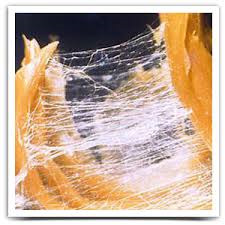By Lauren Cadman, PT, with Heidi Bright
Editor’s note: I went to see Lauren after breaking two fingers in three places this past fall. Physical therapy could not address the excess scar tissue in the affected joints. After eight myofascial release treatments, I now have full use of my fingers again. I am grateful for this healing modality and want to share it with you.

Do you have pain left over from a cancer procedure that physical therapy has not helped reduce? Do your scar tissues and the areas around them still hurt? It might be time to consider myofascial release.
“Myo” means muscle and “fascia” means connective tissue.
This safe and effective hands-on technique involves applying gentle, sustained pressure into areas of the body that are restricted, dense, and tight. This process decreases the tightness to alleviate pain, reduces the thickness of scar tissue, and helps restore normal sensation and motion.
Myofascial restrictions can be caused not only by surgeries to remove cancerous tissue, but also by chemotherapy and radiation.
Breast cancer patients, for example, undergo lumpectomies or mastectomies that leave behind scar tissue. Even without surgery, these patients may develop fibrotic tissue as a direct result of chemotherapy or radiation.
Scars also can grow inside the body like vines, reaching into other regions of the body, like the respiratory diaphragm and into the neck and shoulders. Patients may experience pain in the neck, shoulders, and upper back after treatment for breast cancer. Patients who have been treated for cancer in other areas may experience pelvic, back, and leg pain.
This tissue resembles what I like to describe as “a wet sponge drying out to a dry sponge.” The tissue feels thick, tight, and gristly when palpated or touched.
The trauma and inflammatory responses in the body create myofascial restrictions with tensile pressures of about 2,000 pounds per square inch on pain-sensitive structures. That’s a lot of pressure.
These restrictions do not show up in many standard tests (including x-rays, myelograms, CAT scans, or electromyography). Instead, they are detected using palpation, or touch.

Once scar tissue has formed, myofascial release techniques applied below and above the scar region can be helpful in eliminating the pain and softening the scar. It can be extremely helpful in improving tissue mobility, pliability, and hydration.
The time element in MFR treatment is vital. It is essential that the practitioner apply sustained pressure to the tissue for a minimum of 90 seconds. This low-load gentle pressure applied slowly will allow the connective tissue to soften and elongate.
Being free of pain and being able to move more freely can help provide emotional benefits for those treated for cancer.
Cancer treatment should not end with interventions to treat the cancer. Too often patients are left with residual problems, some of which can be addressed with MFR to help them return to more optimal health.
If you or someone you know has been down this road, consider adding myofascial work to the health care plan.
Balance the soft tissue, decompress the joints, alleviate the residual pain, and restore your energy.
Lauren Cadman, PT, Premier Wellness and Myofascial Release